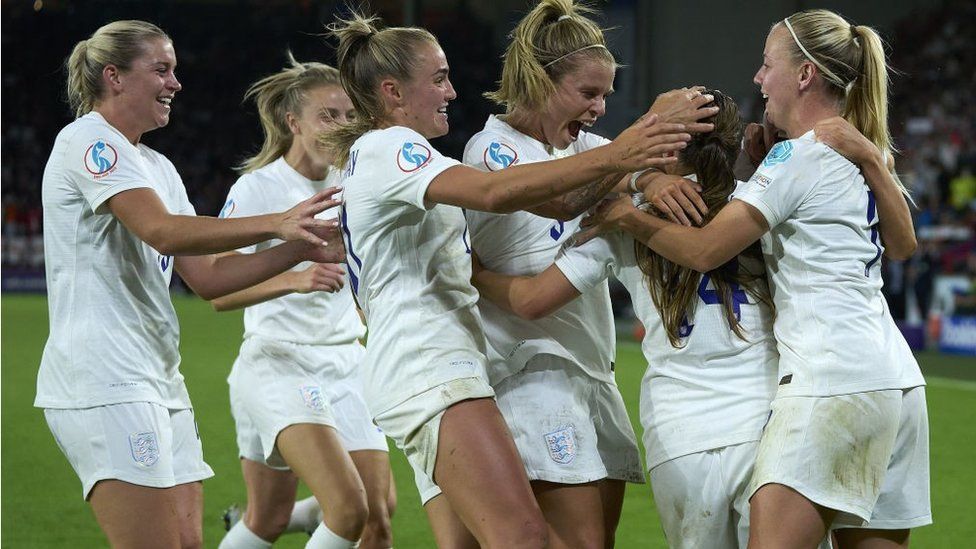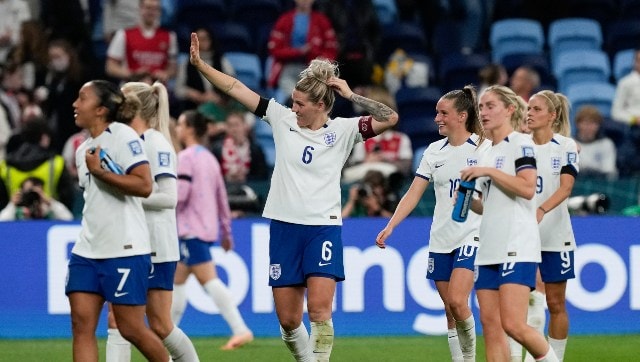“Women’s Football Progress in England
Related Articles Women’s Football Progress in England
Women’s Football Progress in England

Women’s football in England has undergone a remarkable transformation in recent years, shattering stereotypes, breaking records, and captivating audiences. What was once a marginalized and underfunded sport has blossomed into a thriving and increasingly popular phenomenon. This article delves into the journey of women’s football in England, highlighting its historical context, key milestones, challenges overcome, current state, and future prospects.
Historical Context: A Century of Struggle and Resilience
The history of women’s football in England dates back to the late 19th century, with the first recorded match taking place in 1895. During World War I, as men were called to the front lines, women stepped up to fill their roles in factories and other industries. This newfound independence extended to the football field, where women’s teams emerged and drew large crowds.
However, the burgeoning popularity of women’s football was short-lived. In 1921, the Football Association (FA) banned women’s teams from playing on FA-affiliated grounds, citing concerns about the sport’s suitability for women. This decision dealt a devastating blow to women’s football, effectively pushing it to the fringes of the sporting landscape for the next 50 years.
Despite the ban, women’s football persisted, driven by the passion and determination of players, coaches, and supporters. Teams played on non-FA grounds, often facing limited resources and public indifference. This period was marked by struggle and resilience, as women fought to keep their sport alive against the odds.
The Revival: A Gradual Ascent
The FA’s ban on women’s football was finally lifted in 1971, paving the way for a gradual revival of the sport. The Women’s Football Association (WFA) was formed in 1969, and it played a crucial role in organizing and promoting women’s football at the national level.
In 1993, the FA took over the administration of women’s football, signaling a renewed commitment to its development. The establishment of the FA Women’s Premier League in 1991 provided a national platform for the top women’s teams, while the introduction of the FA Women’s Cup in 1970 offered a prestigious knockout competition.
However, progress remained slow and uneven. Women’s football continued to face challenges in terms of funding, facilities, media coverage, and public perception. Many players had to balance their football careers with full-time jobs or studies, highlighting the lack of professional opportunities in the sport.
The Turning Point: Investment and Professionalization
The early 21st century witnessed a significant shift in the fortunes of women’s football in England. Increased investment from the FA, clubs, and sponsors, coupled with a growing recognition of the sport’s potential, led to a period of rapid growth and professionalization.
In 2011, the FA launched the Women’s Super League (WSL), a fully professional league featuring the top women’s teams in the country. The WSL provided players with full-time contracts, improved training facilities, and greater exposure, attracting talented players from around the world.
The success of the WSL has been instrumental in raising the profile of women’s football in England. The league has attracted significant media coverage, with matches broadcast on television and online platforms. Attendances at WSL matches have also increased steadily, reflecting the growing popularity of the sport among fans.
Key Milestones: Landmark Achievements
Several key milestones have marked the progress of women’s football in England in recent years:

- 2012 London Olympics: The inclusion of women’s football in the 2012 London Olympics provided a major boost to the sport’s visibility and popularity. Team GB’s women’s team, featuring players from England, Scotland, Wales, and Northern Ireland, reached the quarter-finals, capturing the imagination of the British public.
- 2015 FIFA Women’s World Cup: England’s third-place finish at the 2015 FIFA Women’s World Cup in Canada was a watershed moment for the sport. The Lionesses’ impressive performance, led by star players like Steph Houghton and Fran Kirby, captured the hearts of the nation and generated unprecedented media coverage.
- 2017 UEFA Women’s European Championship: England hosted the 2017 UEFA Women’s European Championship, providing another opportunity to showcase the sport to a wider audience. Although the Lionesses were eliminated in the semi-finals, the tournament was a resounding success, with record-breaking attendances and television viewership.
- 2019 FIFA Women’s World Cup: England reached the semi-finals of the 2019 FIFA Women’s World Cup in France, further solidifying their status as one of the top teams in the world. The Lionesses’ performances, coupled with the tournament’s global popularity, helped to inspire a new generation of female footballers.
- UEFA Women’s Euro 2022: England hosted and won the UEFA Women’s Euro 2022, marking a historic moment for the sport in the country. The Lionesses’ triumph, led by coach Sarina Wiegman, captivated the nation and generated unprecedented levels of support and media coverage.
Current State: A Thriving Ecosystem
Women’s football in England is currently in a thriving state, with a well-established professional league, a growing grassroots base, and increasing levels of participation and engagement.
The WSL features some of the best players in the world, attracting talented internationals from across Europe, North America, and beyond. The league is highly competitive, with several teams vying for the title each season.
Beneath the WSL, the FA Women’s Championship provides a platform for aspiring professional players. The league is growing in strength and competitiveness, offering opportunities for young talents to develop and progress.
At the grassroots level, women’s and girls’ football is booming, with increasing numbers of participants at all ages and abilities. The FA has invested heavily in grassroots development programs, providing coaching, facilities, and opportunities for girls to play football.
Challenges and Opportunities: Navigating the Future
Despite the remarkable progress of women’s football in England, challenges remain:
- Gender Pay Gap: A significant gender pay gap persists in football, with female players earning far less than their male counterparts. Addressing this disparity is crucial to ensuring fair and equal opportunities for women in the sport.
- Media Coverage: While media coverage of women’s football has increased significantly in recent years, it still lags behind that of men’s football. Further investment in media partnerships and broadcasting deals is needed to raise the profile of the women’s game.
- Sponsorship and Commercialization: Women’s football has the potential to attract significant sponsorship and commercial investment. However, more work is needed to develop compelling marketing campaigns and build strong relationships with brands and businesses.
- Diversity and Inclusion: Women’s football needs to be more diverse and inclusive, reflecting the communities it serves. Efforts are needed to address barriers to participation for women from underrepresented groups, including ethnic minorities, LGBTQ+ individuals, and people with disabilities.
Looking ahead, women’s football in England has enormous potential for further growth and development. The Lionesses’ success at the UEFA Women’s Euro 2022 has created a wave of momentum, inspiring a new generation of female footballers and attracting new fans to the sport.
Conclusion: A Bright Future
Women’s football in England has come a long way since its early days of struggle and marginalization. Today, it is a thriving and increasingly popular sport, with a well-established professional league, a growing grassroots base, and a bright future ahead.
The journey of women’s football in England has been marked by resilience, determination, and a unwavering belief in the power of the sport. As the game continues to grow and evolve, it is essential to address the remaining challenges and seize the opportunities that lie ahead. By investing in grassroots development, promoting diversity and inclusion, and addressing the gender pay gap, women’s football in England can reach its full potential and inspire generations to come.

